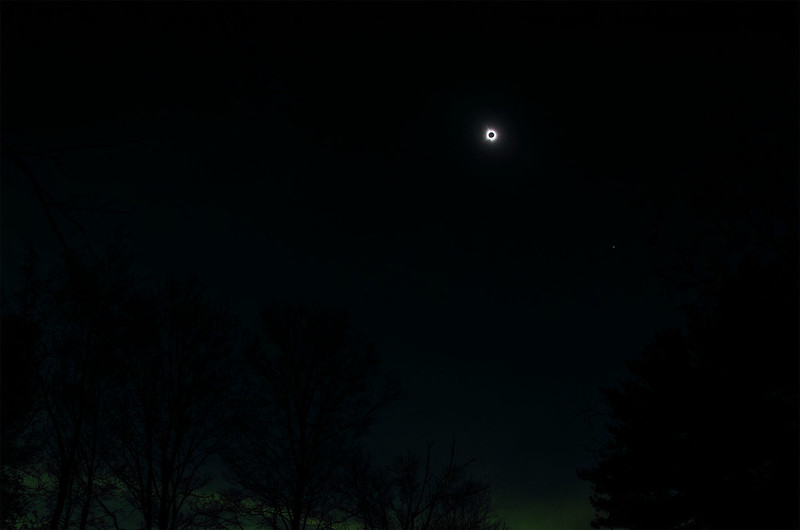
Totality seemed to happen in a second, even the 1% of sunlight was enough to illuminate the environment - dim and oddly colored, but still bright. Once totality took place, everyone removed their eclipse glasses and enjoyed the view. I concentrated on bracketing the sun's corona, taking numerous photos at different exposures to capture the different elements of the phenomenon.
We only had four minutes to view, adjust, adapt, and capture images, but I also wanted to take in the experience with my eye out of the viewfinder. In addition, I wanted to capture the environment around me during totality, so I brought along an older camera to do just that, without the need to change lenses and settings on my Z8.
Attempting to match the light as I experienced it, is not as easy as it seems. Shooting manual exposure, I can adjust the camera to take a photo during the eclipse that would be as bright as a normal day, so I kept the settings the same as the images I captured around the yard prior to totality. That, I think, gives a correct impression of just how dark things were.
It's amazing how small the sun appears when it's covered by the moon- all that radiation spreads out and tricks our eyes and makes it appear huge. It's really about the size of the full moon, and that's a very interesting coincidence for those of us on earth. If the moon was smaller, or the sun was closer, we would never had a total eclipse, the moon would transit across the sun and that's about it. If the moon was larger, we would have an eclipse, but the sun's corona would be obscured during most of the event. So, we're quite lucky to have these bodies as they are, so during syzygy (the alignment of the earth, moon, and sun), the moon covers the sun almost perfectly, and the moon creates the dark shadow on the earth called the umbra.
It's a shame eclipses don't last longer, and they don't happen more often. I suppose if they did, we'd take them for granted instead of traveling hours to gaze at them in awe.


No comments:
Post a Comment